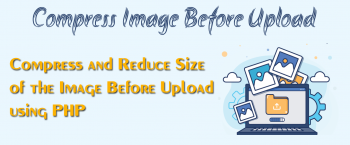How to choose the best Web Designer in Melton Australia ?
This article covers What To Look For When Choosing A Web Designer in Melton, Melbourne, Victoria, Australia.
How to Choose the Best Website Design Company in Melbourne for You ?
1. Start with a Google Search in your area
You can see the most popular website design choices from the first few pages and which companies are employing the best practices. Search engines rank the most accessible and optimized websites at the top, so you know you are getting the best options right away.
2. Check their websites to shortlist
Web design agencies should be upfront and transparent in what they can offer you while proving their expertise in design, organization, and easy-to-use online interface.
3. Evaluate reviews and create a shortlist
Some of the best or most valuable advice on choosing the best website design company is to check what their existing customers have to say about their work.
4. Look at their portfolios for your top picks
Try to find companies that offer variety in the design platforms they use.
5. Check out their blog posts
The content they create on their blog can also show how knowledgeable an agency is on specific topics and trends.
Questions to ask a web design company to ensure it's the right choice:
- How does your design process work?
- What design platforms do you use? (WordPress, Shopify, etc.)
- What is your pricing model?
- Does your company offer revisions? How many?
- How do you assign project management? (direct creative collaborations or assigned project managers, etc.)
- What is your availability to work on my website?
- Do they offer SEO or value-added content?
Using WebMatrix – Create and publish websites with ease
This article covers WebMatrix which is a simple and free development tool to create, customize, publish and maintain websites with ease. WebMatrix is basically a free, lightweight, cloud-connected web development tool that enables you to create, publish and maintain your websites with ease. You can use it to create HTML5/CSS3 compliant websites, with LESS and Sass support, and code completion for JavaScript and jQuery.
Also, You can develop using ASP.net, PHP and Node.js with context sensitive code completion.
WebMatrix lets you work seemlessly with various databases, viz. SQL CE, Sql Server and MySQL. Creation of databases and modification of schema and data are as simple as it gets.
Also, WebMatrix provides a straightforward path to migrate databases, for example, migrating a SQL CE database to a SQL Server database.
Publishing these databases is also handled for you by the product so long as you use a WebDeploy publish profile to publish your website.
Website statistics using Google Analytics - How it works
This article covers the features to find Website statistics using Google Analytics. Basically, Google Analytics is a powerful web tracking software that tracks a website's web metrics. Google Analytics is used to track website activity such as session duration, pages per session, bounce rate etc. of individuals using the site, along with the information on the source of the traffic.
Google's official recommendation for adding the Google Analytic tracking code is place the tracking code in the HEADER SECTION ( <head>) of the website.
To see my website traffic using Google Analytics:
Google Analytics tool gives lots of useful website data such as:
1. Number of visitors per month or per day, percentage of new users, bounce rate and length of visitor sessions.
2. You can check your website's SEO now.
To Add the tracking code directly to your website:
1. Find the tracking code snippet for your property. Sign in to your Analytics account, and select the Admin tab.
2. Find your tracking code snippet.
3. Copy the snippet.
4. Paste your snippet (unaltered, in its entirety) into every web page that you want to track.
5. Check your setup.
WordPress vs Joomla - Which is Better
This article covers the comparisons and differences of both WordPress vs Joomla. Basically, both WordPress and Joomla is an option for web hosting providers as options for web development tools.
Choosing a Content Management System (CMS) is an important decision that can have huge repercussions for your website.
There are a number available, each with their own pros and cons, and fanatical fanbases pulling for their chosen platform.
A detailed comparison (WordPress vs Joomla):
1. Search engine optimization
If we compare the Search Engine Optimization (SEO) capabilities of both platforms out of the box, Joomla takes a slight edge due enabling its users to set meta descriptions and keywords for new articles.
2. Security
Due to its popularity, WordPress has a giant target on its back when it comes to security vulnerabilities.
Outsourcing Improves Software Development
In summary, in order to stay at the top, it is vital to respond to the demands and trends of your consumers. This is made easy and possible through Outsourcing. Today, we saw how #Outsourcing Improves #Software #Development.
Outsourcing has the potential to improve your business' efficiency, reduce the time to market of your application, and result in significant cost-savings, but only if it is done correctly. There are significant risks involved in outsourcing development as well.
Advantages of Outsourcing includes:
1. Focus on core tasks.
2. Lower costs.
3. Promote growth.
4. Maintain operational control.
5. Offer staffing flexibility.
6. Provide continuity and risk management.
7. Develop internal staff.
Optimize Image before Upload Using PHP
This article will guide you on how to #optimize the #image on upload in #PHP. #TinyPNG uses smart lossy compression techniques to reduce the file size of your PNG files. By selectively decreasing the number of colors in the image, fewer bytes are required to store the data. The effect is nearly invisible but it makes a very large difference in file size.
To optimize images for the web:
1. Name your images descriptively and in plain language.
2. Optimize your alt attributes carefully.
3. Choose your image dimensions and product angles wisely.
4. Reduce the file size of your images.
5. Choose the right file type.
6. Optimize your thumbnails.
7. Use image sitemaps.














